Home
&
Index | Email
Me!
Photo Album of
U.S. AIR FORCE
EXPLOSIVE
ORDNANCE DISPOSAL (EOD)
A YEAR IN
VIETNAM, 1966-1967
by
Lieutenant Colonel Ted A. Morris, USAF, Retired
Copyright 1996
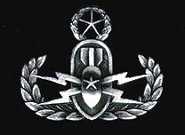 .... ....
Cau Mau,
Mekong Delta, RVN. A portion of the
recovered 2.75 inch FFAR warheads, motors,
launchers and small arms ammunition. These
munitions have been subjected to fire and
immersion in water, and are hazardous and
unserviceable. The motors and small arms
will be exploded into the ground, but the White
Phosophorous (WP) warheads will be exploded up
into the air to allow the WP to burn itself out.
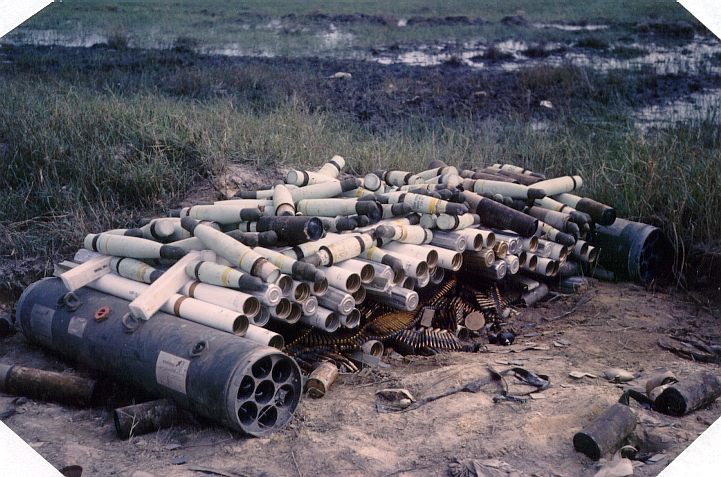
Cau Mau. The detonation of a
portion of the recovered 2.75 inch FFAR motors and
WP warheads. The WP is the white burning in
the center of this photo.
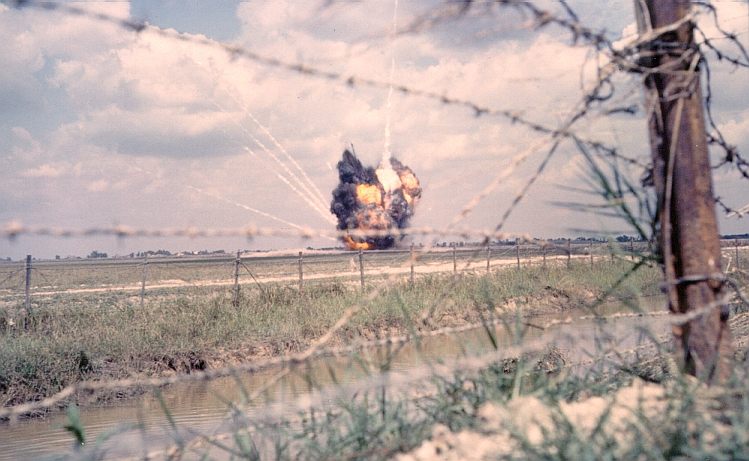
US Army
Long Binh Depot, RVN, October 29, 1966. An
aerial view of a very large crater left from a
stack of 12,000 eight inch high explosive
artillery projectiles follwing an explosion caused
by the Viet Cong. The cleared area just
visible at the top is the vital Army
Communications Antenna farm, where the 7th AF EOD
team recoverd over 200 of the projectiles.
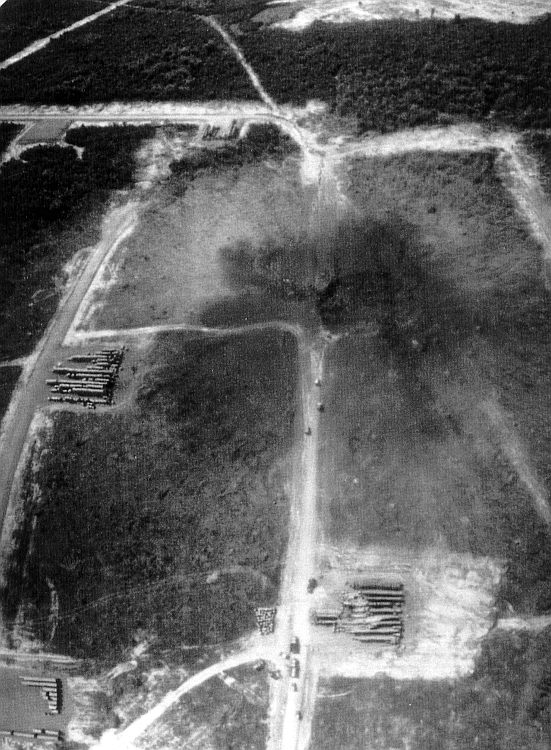
At Long
Binh Depot. SSgt. Bartram digs to recover an
eight inch artillery projectile from the
communications antenna farm. The VC
destroyed aobut one-half of a 12,000 projectile
stack and scattered the other half over the
depot. Shovels, ditch diggers and pole
augers (shown here) were used to dig down and
recover the deeply buried projectiles.

At Long Binh. The author takes his turn with
the manual earth moving device. "And my dad
said if I didn't do better in high school, I'd
never get a job!" -- color photo
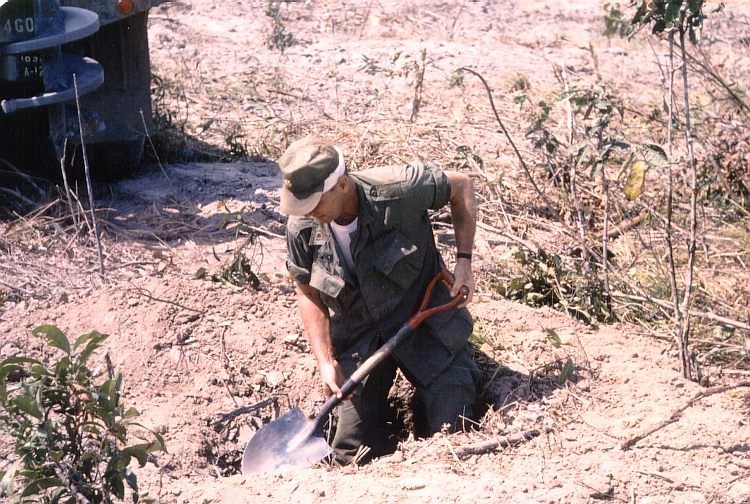
Long
Binh. Some of the hazardous eight inch
artillery projectiles collected by EOD personnel
following the VC attack. All have been
subjected to severe shock and heat, making the
internal explosives chemically unstable. --
color photo
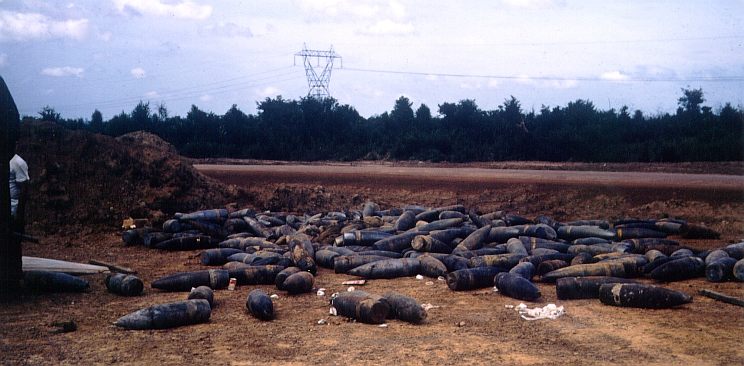
Thu Duc Explosive Disposal Area. The blast
from ten 120-pound Photo Flash bombs. Prior
to setting up this demolition, 7th AF EOD
personnel were engaged in a fire fight with Viet
Cong who had attacked the control building in the
foreground, wounding three ARVN personnel.
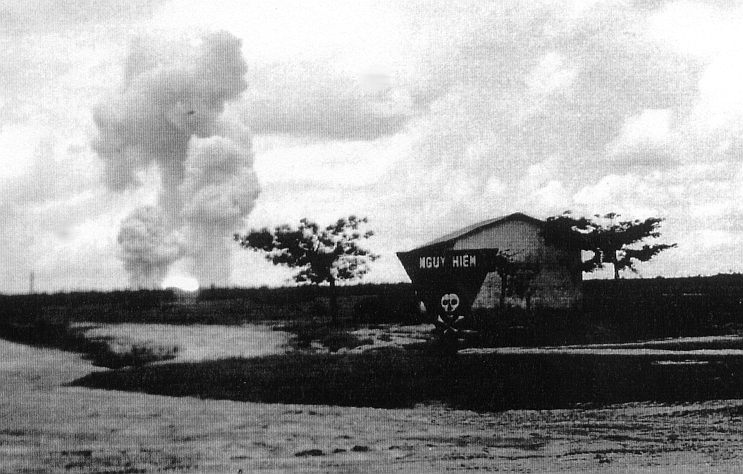
Pleiku
AB. A CBU-19 dispenser. It carries
several hundred E-158 CS (tear gas) bomblets that,
when dispensed 'skidder' or scoot all about the
area emitting gas. Used extensively by the
propeller driven A-1 "Spad" attack aircraft.
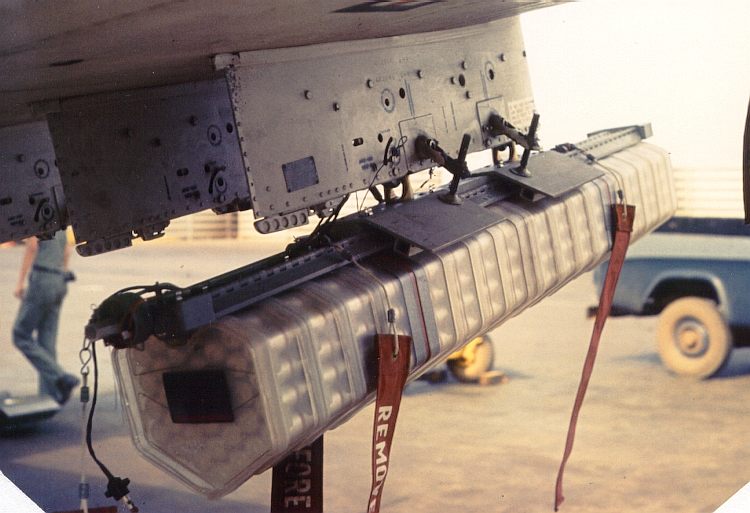
Da Nang
AB. A Russian made 140mm unguided rocket,
its fuse, and the simple but effective launch
tube. The rocket is about 4 feet long.
The warhead contains about 10 pounds of high
explosive. The fuse is fired on
impact. The luanch tube is aimed at the
target, anchored to the ground, the rocket
inserted and then fired electrically by an
ordinary flash light battery.
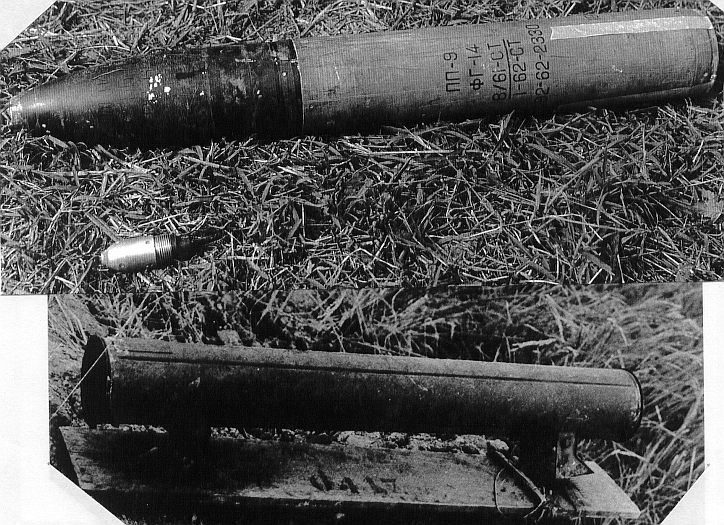
Da Nang
AB. The Continuous Rod Warhead (CROW) of an
AIM-7 SPARROW missile that had been loaded on an
F-4 aircraft hit by a 140mm Russian made
rocket. The white residue is the warhead's
explosive, which is now very hazardous, having
been partially burned and exploded. The item
in the foreground is what remains of a partially
destroyed 500 pound bomb.
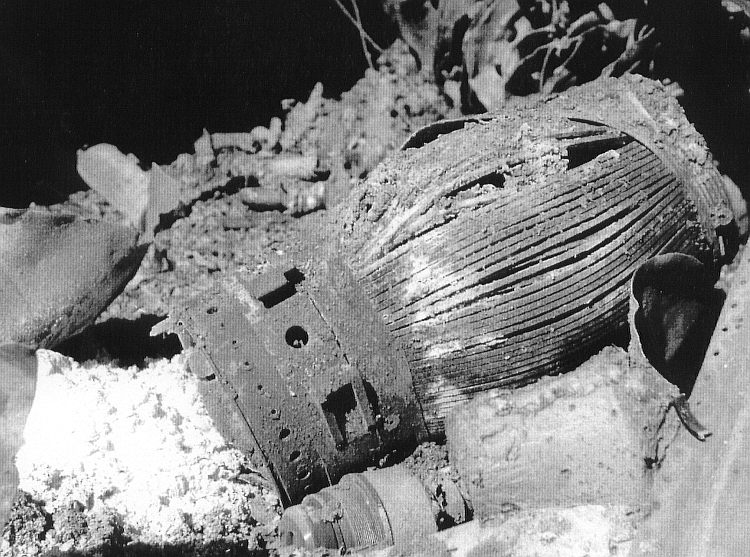
Da
Nang. After the 140mm rocket attack.
As this Air Force fire truck drove up to attempt
to put out the fire on a burning, bomb-loaded F-4,
one or more 500 pound bombs detonated, killing
five firemen. The truck was a Type 0-11A
manufactured by American LaFrance out of Elmira
NY. They were purchased only by the Air
Force around 1954. About 1100 were
made. This is the only know loss in combat
(thanks to Art Williams for the information).

Da
Nang. A direct hit by a Russion made 140mm
rocket on a C-130A used as an airborne command
post for Rescue Operations. Just one of
several direct hits by the VC during attacks
against the AB.
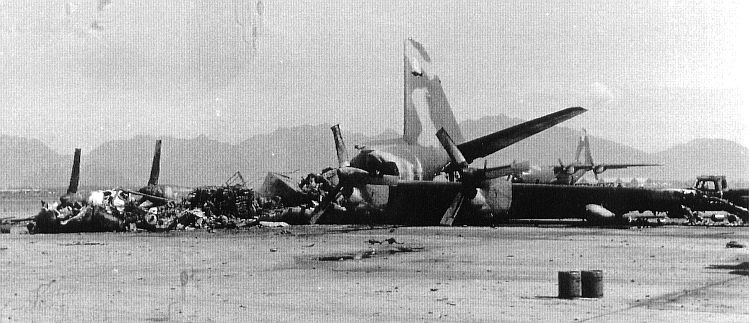
Tan Son
Nhut AB, December 4, 1966. A portion of the
explosives removed by EOD personnel from dead,
wounded or captured Viet Cong during their attach
on the base. Include are Rocket Propelled
Grenades (RPGs), US 40mm projectiles, and numerous
home made hand grenades.
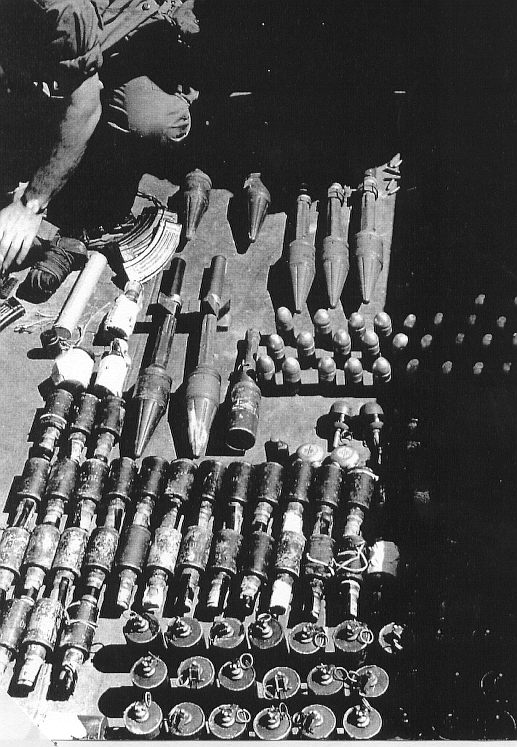
Tan Son Nhut. A portion of the Viet Cong AK-47
assault rifles, RPG-7 launchers, and a flag captured
by 7th AF EOD personnel during the attack on the base.

From captured VC photos. A primary source of
high explosives for VC clandestine munitions was
retrieved 100, 500, and 750 pound US bombs that failed
to detonate when dropped. In the foreground, two
VC are sawing open a 750 pound bomb to gain access to
the explosive. 7th AF EOD personnel would try to
deny this source by detonating the explosives from
shot down or crashed aircraft.
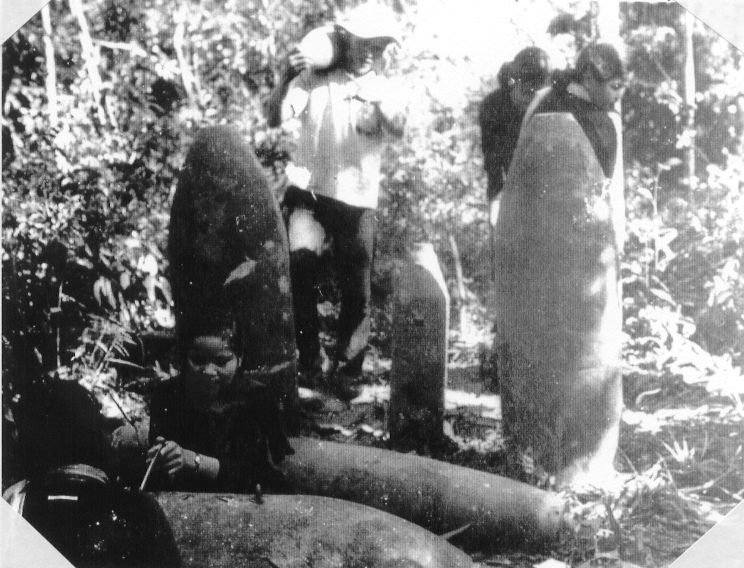
Tan Son Nhut. A US 60mm mortar projectile and
a BLU-3 anti-personnel bomblet captured by the Viet
Cong and adapted to be used as rifle grenades.
These particular items were found rigged as booby
traps (hanging from trees and released by a trip
wire). The mortar round is armed and ready to
detonate. The BLU-3 cover would come free during
launch and would then be armed.
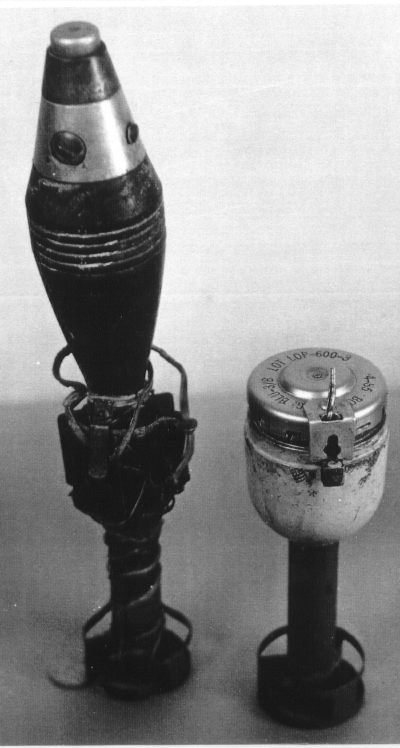
Tan Son Nhut. A capture booby-trapped VC
directional mine. This shows the crude but
very effective construction and simple firing
device. Containing less than a pound of high
explosive, it could very easily destroy a vehicle
or human. The mine was pressure fired when a
heavy weight triggered it. The one shown
here had been set to explode when a large rock
rigged to a trip-wire would fall onto the
mine. A grenade had also been booby-trip
wired beneath the mine so that both the mine and
grenade would instantly expode if carelessly
picked up.
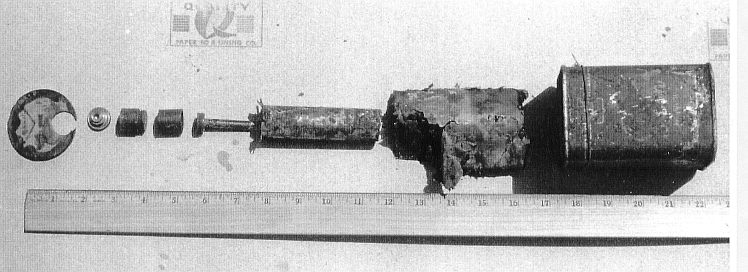
Long
Binh, again (Feb. 1967). The remains of a
stack of over 15,000 high explosive 155mm
artillery projectiles after the VC attack on
February 4. Over the two month recovery and
clearing operation, tens of thousands of these
hazardous munitions were recoverd by hand, one at
a time. -- color photo
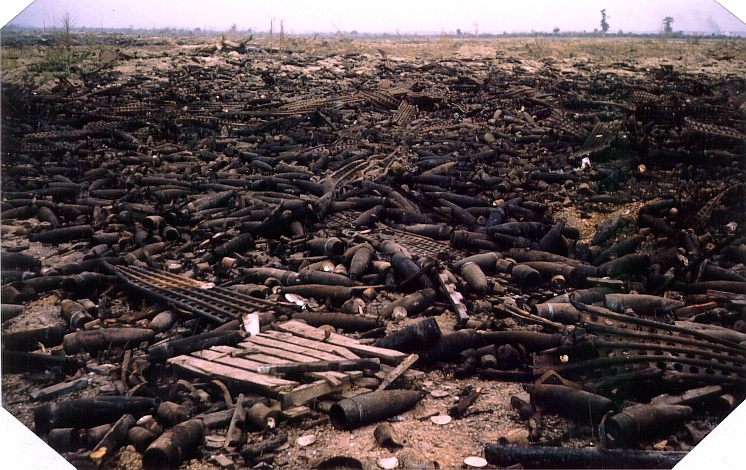
Near
Moc Hoa. Warheads and 2.75 inch FFAR rocket
motors collected by the 7th AF EOD team from a
C-130 shot down by the Viet Cong. Being
hazardous as well as a source of explosives for
the VC, they will be destroyed.
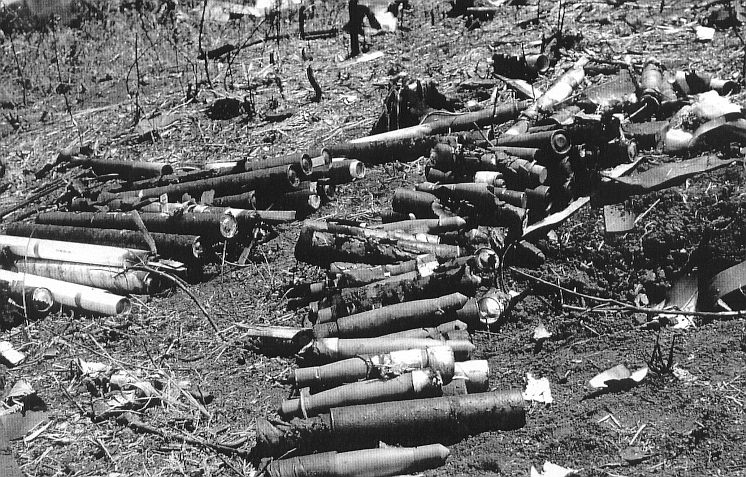
Near
Moc Hoa. The remains of ten 2.75 inch FFAR
warheads. Several have been broken open, and
all were subject to fire and in very hazardous
condition.
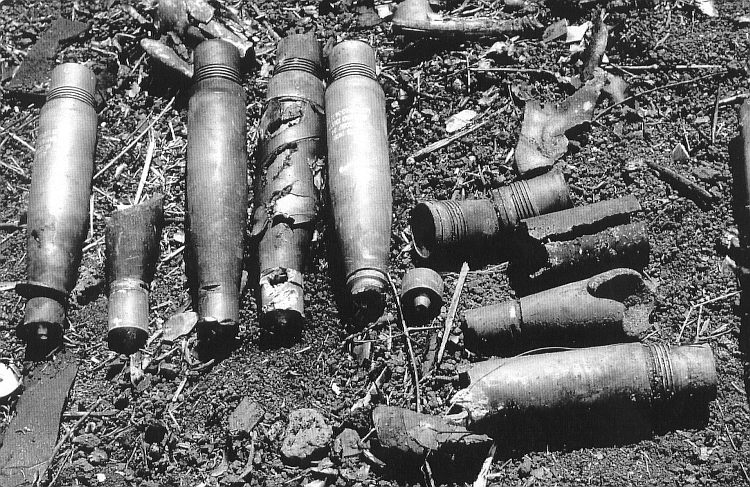
At an
ARVN fortified hamlet, Mekong Delta. An EOD
man digs out an unexploded rifle grenade following
a VC attack. Considered very hazardous, the
RPG will be detonated in a disposal area after its
recovery. -- color photo.
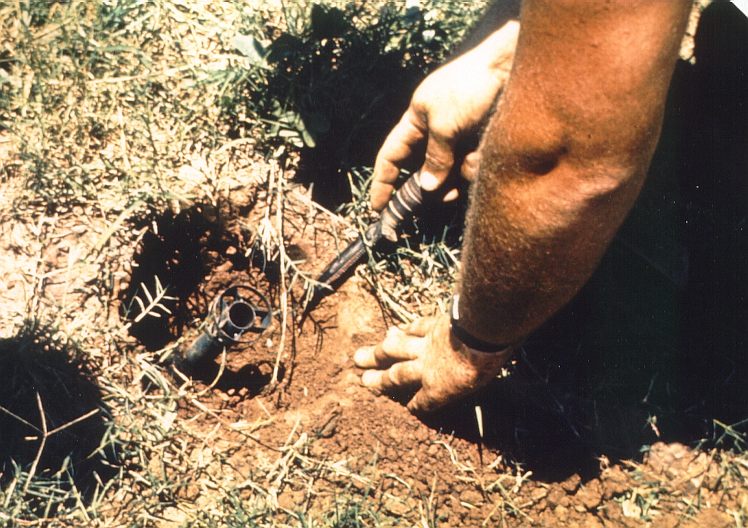
At the
ARVN fortified hamlet. A portion of
unexploded and very hazardous rifle grenades and
mortar projectiles recovered by EOD men following
a VC attack on the hamlet. There are French,
US, and VC manufactured munitions shown
here. Two such items exploded while EOD men
worked to render them safe. -- color photo
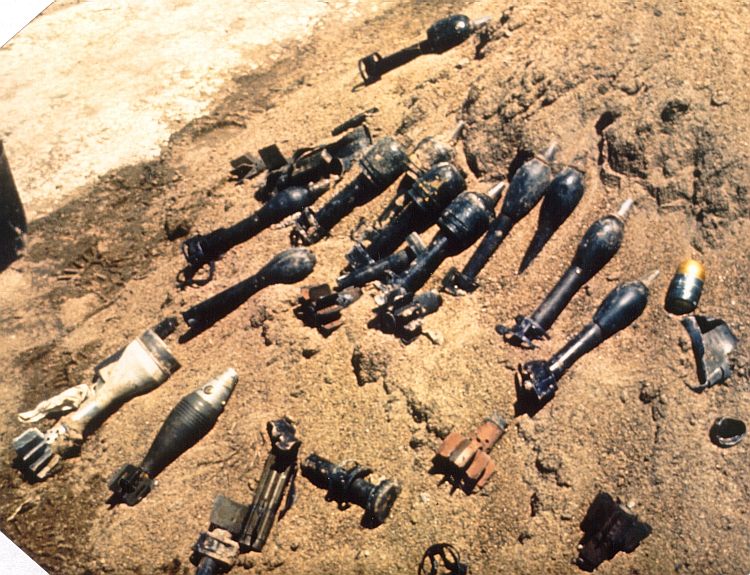
|
 ....
....





















